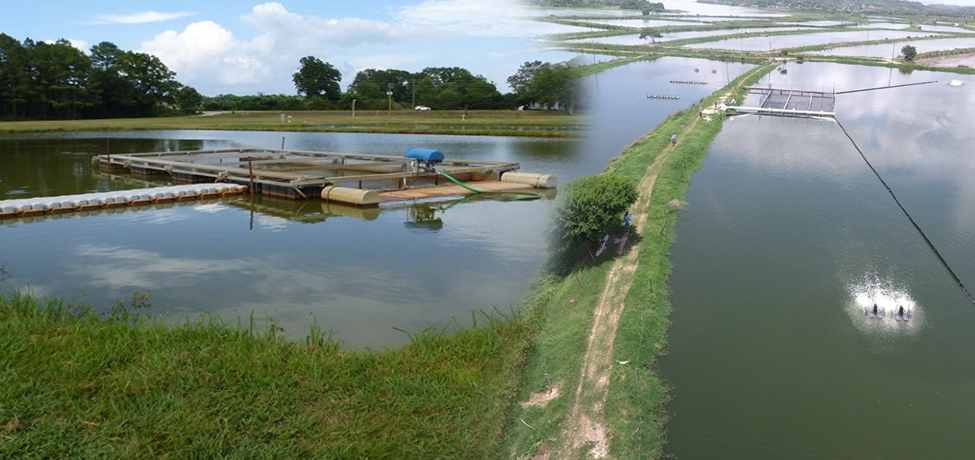In Pond Raceway System (IPRS)

IPRS technology uses the existing large volume of pond water which is circulated through much smaller volume rectangular raceway units that are constructed within the pond. Fish such as tilapia or catfish (Pangasius) are held within the raceways at high density, which facilitates feeding, health monitoring, and harvest. Water quality is maintained by high flow rates through the raceway and is discharged back into the pond. Solid waste is collected at the end of the raceway, while dissolved pollutants are diluted and decontaminated within the larger pond volume. IPA has been demonstrated to increase pond yields two to three times that of traditional pond culture methods. An additional benefit is harvest of species, such as mullets or carps, that can be stocked in the outer pond area and which feed only on the natural biota that arises in the pond.
Tilapia, Oreochromis niloticus
Comparison For Fish
| Factor | Conventional Farming | Cibus Indoor Hybrid RAS | Cibus Outdoor Hybrid RAS | IPRS |
|---|---|---|---|---|
| Land Required | 1 ha | 0.5 ha per module. 2 modules in 1.0 ha | 2 ha (growout pond 1.0 ha + 1.0 ha for utilities) | 1 ha |
| Production | 8.0 metric tons /ha | 400 metric tons / ha | 50 metric tons /ha | 20-26 metric tons / ha |
| Water required | 6000 metric tons | 300 metric tons | 1000 metric tons | 0 metric tons |
| Water recirculation | Nil | 1-2 times /day | 0.5-1 time / day | 240 times/day (w/in raceway) |
| Climatic Variations | Yes | No | Yes | Yes |
| Mortality | High | Negligible | Low | Negligible |
| Exposure to diseases | Yes | No | Yes | Yes |
| Use of antibiotics and chemicals | Yes | No | Yes | Yes |
| No. of cycles of harvest per year | 1-2 | 1-2 | 1-2 | 1-2 |


